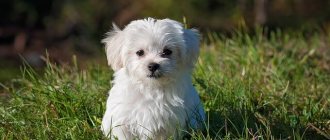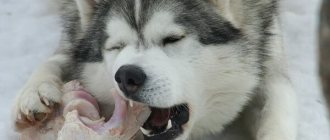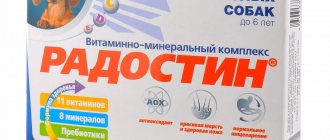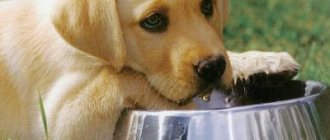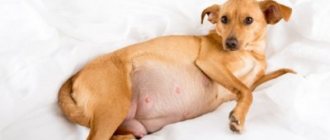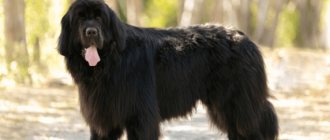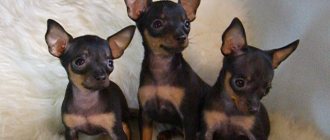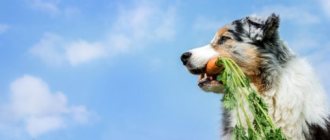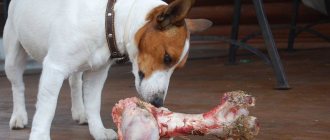Important points
Yorkies can be called quite demanding guys. This applies to both attention and food preferences.
Be sure to keep in mind that all responsibility for the baby’s health lies with you. Its appearance, condition of teeth and even mood will depend on your correct or incorrect choice.
Yorkies are selective , this is not a dog that you can feed from the table and not think about creating a special menu. This can harm your dog to varying degrees, from digestive problems to death.
Moreover, Yorkshire terriers often refuse to eat on their own and wait until their owners hand feed them. This is an example of improper upbringing , everything is in your hands.
Of course, every dog is different. Even its appearance will depend on the character of your pet. Playful and active Yorkies remain thin, but phlegmatic dogs that do not know moderation in their food run the risk of becoming obese.
The owner’s task is to track all the features of your Yorkie in a timely manner . If he is prone to uncontrolled overeating, limit his portions; if he is inactive, take him for walks regularly and put him on a diet.
What is strictly forbidden to feed a Yorkie?
Under no circumstances should you mix dry and natural food . You must choose one path and follow it all the time.
Always remember the list of these products and never let your pet eat them :
- Sweet . No cakes, pastries or sugar. Even if he asks a lot. Never and in any form if you do not want to treat a diseased liver, diabetes or teeth.
- Salt . Do not salt the food. Salt for dogs is pure poison. Spices and other strong-smelling ingredients can deprive your dog of his sense of smell.
- Yeast dough and bread .
- Lamb and pork are too heavy meats for Yorkies.
- Bones . The Yorkie is not a dog that should be allowed to chew on a bone. Unless they are toys from a special store.
- Grapes and raisins harm the kidneys.
- Raw fish is extremely dangerous for a dog's life.
- Onions in any form.
- Any seeds or pits because they may contain cyanide toxin.
- Alcohol.
Treat your dog's nutrition responsibly, feed it high-quality food or food, and avoid eating prohibited foods. Don't feed your Yorkie food that is too hot or cold.
Give your dog 15 minutes to eat, then remove the bowl. Don't worry if he hasn't eaten in these 15 minutes, just offer him again in a few hours.
If you have any doubts, consult with breeders or veterinarians, and then your dog will be well-fed and healthy.
Newborn care
The Yorkie puppy spends the first days and months with its mother. The life of tiny babies weighing from 80 to 120 grams completely depends on the amount of milk from their mother . The sucking reflex is innate in babies, however, if you notice that your Yorkie cannot cope on its own, gently hold it near the fullest nipple .
In general, problems should not arise during the natural feeding stage. The first two weeks are very revealing, so puppies must be weighed daily . Normal weight gain is considered to be at least 5 grams per day, after a two-week mark - at least 10 grams per day.
If a situation suddenly arises when the bitch cannot feed the puppies on her own, it is necessary to introduce her milk replacer and feed them every 1-2 hours. colostrum for at least a day , otherwise they most likely may not survive.
How can you help your baby? Prepare a milk mixture from cow or goat milk, one yolk, cream, 40% glucose solution and oil solutions of vitamin A and D. Be sure to heat the mixture to 30-35 degrees.
What should a nursing bitch eat?
The health of the puppies directly depends on the mother's nutrition. During lactation, the animal requires a special approach to nutrition. A nursing dog eats up to 4 times more than normal .
Carefully monitor the quality of products. The diet for the first days should include fermented milk products (low-fat), cereals and plenty of water .
Next, the dog should eat as usual: either dry food or natural food. Among dry food, you can choose specialized food for lactating bitches. During feeding, the number of meals increases up to 6 times .
Food for a nursing bitch must meet the following criteria:
- nutritional value;
- the percentage of protein in the composition is from 24 to 28%;
- high content of minerals and vitamins.
How to properly wash a Yorkshire Terrier
The fur on the body is not combed before washing, only problem areas are checked for the presence of tangles (neck, armpits and behind the ears); if there are any, try to sort them out (using sprays to untangle the tangles). Be sure to carefully comb the fur on the top; do not touch the mustache and beard. Also brush the ponytail or hair curlers along the body.
Wet your hair with very warm water for about 3 minutes from the shower, the water pressure is strong. The first shampoo, as a rule, is used only to wash away dirt. Apply quickly and wash off just as quickly. Start washing from the head and rinse right away! Then the body is washed. Wash off for a long time. The second shampoo is already caring or medicinal; you can add a few drops of oil to it. First they wash their hair and rinse it off, then they wash it over the body. Apply thoroughly, you can make “combing” movements with your fingers. The skin is massaged with your fingertips. Particular attention is paid to the ends of the hair. Rinse for a long time, under a strong stream of very warm water. If necessary, wash a third time with shampoo. They look at the fur.
Balm (conditioner) is diluted only with boiled water. Apply the balm to the fur, starting again from the head, but do not rinse it off at this point! Let him work longer. The conditioner is rubbed with light movements into the skin and coat, in the direction of hair growth - from the spine to the ends. Keep for at least 5 minutes. Rinse off with lukewarm water, keep the pressure from the shower low, the fur should remain slippery. The oil is mixed with any thick conditioners. Dilute sour cream until thick, add 1-2 tbsp. oils (for example: 1 tbsp mink and 1 tbsp jojoba), mix well. The oil does not float on the surface and is easily applied to the wool. Rinse off lightly (not too much, the hair should be slippery).
After washing, the dog is wrapped in a terry towel, which absorbs moisture well. Keep in a towel for 5-10 minutes. During this time, before you start drying your Yorkie, drip eye lotion, check the ears and instill ear lotion, clean them with cotton swabs. I do all this in order to remove any water that gets into the dog’s eyes and ears.
Blow drying
To dry wool, you need to use a hair dryer with a power of at least 1600-1800 W, always with temperature switching. A powerful hair dryer will reduce drying time. Start drying with hot air and a strong flow, simply disassemble the hair with your hand. They don’t dry it completely, the hairs seem dry, but they hang like icicles and are still wet. Turn off the hair dryer and start combing, lightly sprinkling the hair with antistatic for the first time. They take a massager (should have an antistatic coating, metal teeth made of stainless steel, there should be no balls on the tips of the teeth) and start combing from the ends of the hairs, gradually, like going up a flight of stairs, higher and higher. If the brush finds places where the hairs are tangled, then change to a comb with rotating teeth and untangle with it. After all the hair has been combed, we go back to the hairdryer and dry the hair (wool) with warm air, alternating with a cold stream. If your hair has waves, now is the time to pull it back. Try to direct the air flow along the hair growth. The third stage of drying is cold flow only. The wool must be dried thoroughly; this is the only way to avoid tangles and get away from the waves.
The last stage is the final combing. Combing sequence:
comb No. 1
comb No. 5, comb all hairs, especially problem areas, make a parting and a ponytail.
comb No. 2, before combing it, lightly spray it with an antistatic agent a second time and comb it. Make a top or braid. Collect the mustache and beard with latex elastic bands.
And of course, you cannot grow beautiful and bright wool without special additives (vitamins).
Feeding the puppies
Starting from the end of the second week, you may think about introducing complementary foods . Add one food item to your diet once a day.
Goat, sheep or cow's milk (warmed), kefir and fresh cottage cheese are perfect for starting complementary feeding . Literally a teaspoon at a time. After making sure that complementary foods are well absorbed and do not cause problems in the dog’s digestion, increase the number of complementary feedings to 2-3 times a day.
Important ! Don't forget that calcium is essential for baby development and bone formation. Carefully monitor the amount of food you consume.
Starting from the middle of the 4th week, you can diversify your diet by eating meat . Finely chop the raw meat, add a little warm water and give it to the puppy to try. After a couple of weeks of this diet, you can give boiled meat several times a day.
By the end of the 6th week, the puppy's nutrition will look something like this: 2 milk meals, 2 meat meals and 2 more with mother's milk.
It is important to approach your dog's diet correctly. It directly depends on the age of the puppy .
- From 3 to 6 months – 4 meals a day.
- From 6 to 12 months – write 3 times a day.
- From one year and older – 2 meals a day.
Now about vitamin support.
1. Calcium must be present in a baby’s diet while the baby is actively growing and teeth are changing, even though almost all of our babies are on professional food. You need to be careful with veterinary calcium; it is better not to add it than to give it, as it has the ability to cause deposits in the kidneys.
READ Which cereals can be given to dogs, and which ones should be avoided?
I have been using human chelated calcium for many years. This is a dietary supplement - Calcium Magnesium Chelate (Natures Sunshine), calcium has an excellent balanced composition of 2 to 1 (calcium, magnesium, phosphorus, vitamin D3), is absorbed 100% and does not cause deposits in the kidneys. Dosage from 1/8 to 1/4 tablet, depending on weight (mini - standard).
1) in tablets from the company 8 in 1 “Glucosamine”, dosage 1 tablet up to 10 kg for 3-4 weeks, then a break of 10-14 days
2) “Stride Plus” liquid, dosage for small breeds 1-2 ml for 3-4 weeks, then a break of 10-14 days
3) Complex vitamins from Volmar L-Collage (½ tablet each) and Ga-Glican (1 tablet each). When using them, veterinary calcium should not be given, since this complex contains it. They are given for 1 month, then a break of 10-14 days depending on the result.
3. Gelatin, soaked 1/4 - 1/2 teaspoon, soaked in cooled boiled water. Not everyone eats it, you can mix it with wet food or dilute it in a larger volume of water and drink it from a syringe. We give 2-3 weeks.
I hope that these recommendations will be useful to you.
Good luck!
Dry food or natural food?
This is an eternal subject of debate among all veterinarians, breeders and owners of Yorkshire Terriers. We invite you to make your own choice by familiarizing yourself with all the nuances of the various food options.
Industrial feeds are divided into 2 types: canned food and dry food. Many of you have probably heard about the dangers of dry food and all kinds of kidney diseases in dogs that eat this way. Most likely, this opinion is a greeting from the past, when low-quality goods flooded the markets. Currently, dry food is considered a good choice due to its balanced composition, which provides all the necessary vitamins and nutrients.
An additional advantage to choosing dry food: there are foods on the market that offer a nutritional system for dogs of different weights and ages. They already include everything necessary for the proper development of your Yorkie and you don’t have to worry about its proper nutrition.
Most owners are inclined to favor dry food for a number of reasons.
- Availability in free sale.
- Easy to use: It takes less than a minute to pour the food into the bowl.
- Convenient to use when traveling.
- There is no need to buy additional vitamins and supplements, everything you need is already included.
- Long storage time.
Supporters of natural nutrition most often include breeders. They motivate their choice by the following factors:
- Less harmful.
- Big variety.
- No chemical additives.
- Easily digestible by animals.
A significant disadvantage for a busy Yorkie owner will be the need to devote time to cooking separately for the pet, as well as the need to select the necessary set of supplements and vitamins with a veterinarian.
Diet with natural food
If you decide to feed your Yorkshire Terrier natural food, then give preference to the following products:
- Boiled meat . Yorkies love chicken, turkey, and beef. Meat should make up 50% of their diet.
- Cereals : rice and buckwheat. They must be cooked until tender. It is allowed to eat wheat and millet porridge.
- Ryazhenka , kefir and yogurt .
- Low-fat cottage cheese . Please note that it is better to dilute it with fermented baked milk or kefir so that the dog does not choke.
- Boiled vegetables in small quantities: carrots and zucchini.
- Fruits : It is acceptable to include apples, banana, melon and watermelon in the diet.
- Boiled sea fish once a week.
Feed Yorkies at the rate of 1 tablespoon per 500 grams of animal weight. You need to cook separately for your dog; food from your table will not suit him .
How to choose a collar for a dachshund? How to train to a tray? How to care for a puppy? All this is discussed in the article about the care and maintenance of dachshunds on our website.
Do you know what is included in the diet of German Shepherd puppies? Read our informative article.
How to properly carry a Toy Terrier in your purse. A must know for all owners.
What can you feed your Yorkie?
Both natural and dry foods are suitable for this breed (such as Acana Classics dog food). It all depends on the owner’s capabilities and desires, and state of health. However, the basis of any dog’s diet should be proteins, which are found mainly in meat. It is also necessary to take care of a sufficient amount of carbohydrates, fiber, vitamins and minerals. How many times a day should you feed your Yorkie? Is it necessary to boil food and is raw food dangerous for contamination?
Simple rules for experienced and novice owners:
- Meat and tripe are given only raw; after heat treatment they lose their beneficial properties. Offal (liver, heart, lungs) is lightly boiled to avoid stomach upset. Scalding will not kill harmful microorganisms, but regular treatment with anthelmintics will save you from parasites.
- For an adult, feeding two or three times a day is sufficient. For newborns, juniors, patients, pregnant women, and the elderly, the frequency is different.
- Access to fresh drinking water is always free for any feeding method.
- A Yorkshire Terrier should not fast for more than 1 day. Hypoglycemia is a dangerous condition and sometimes leads to death; it appears due to a sharp decrease in blood sugar after a long fast. The smaller the dog, the higher the risks.
- Pieces of food should be of medium size (about 22 cm) so that the jaws work and the Yorkie does not choke. Minced meat is very poorly digestible.
- You can't constantly change your diet. A monotonous menu of familiar ingredients with rare inclusions of delicacies is better.
- Do not mix feeding dry and natural products. The digestive system of ornamental breeds rarely copes with sudden transitions and cannot quickly regulate the production of enzymes for each type of food.
- Food is given only warm, as is water. Hot causes burns to the mucous membranes, and cold causes gastritis.
- In winter, the serving volume is 15% larger during long walks and low air temperatures.
Feeding your Yorkie natural food
Feeding a Yorkshire Terrier with natural products does not bring additional hassle, because they need very little. The diet should be based on proteins - about 3.5% of the animal’s weight. For example, if you weigh 3.5 kg, you need 105 g of beef per day. Trip is less nutritious, so the portion with it is increased by 1.5 times. In terms of composition and digestibility, beef and horse meat of the 2nd grade with streaks are ideal. Chicken and turkey are easily digestible, but frequent consumption can lead to excess protein and allergies, liver damage. Give them 2-4 times a week. Chicken eggs are healthy and nutritious; they are boiled and only the yolk is fed to the pet 3 times every 7 days. Quails in the amount of 2 pieces are given in the shell and raw. They do not carry the dangerous disease salmonellosis.
Cottage cheese, kefir, fermented baked milk, whey and yogurt saturate the body with protein, calcium and support the microflora of the digestive system, so they are always present in the diet. You can eat them every other day. Only sea fish without a ridge, boiled for 10 minutes, are acceptable: pink salmon, hake, halibut, cod, small mackerel, salmon. There are a lot of parasites and small bones in the river, it needs to be boiled for a long time and it becomes useless and falls apart.
Fruits (green apples), herbs (parsley and dill), vegetables (zucchini, pumpkin, cucumbers, carrots) are a source of vitamins and minerals, fiber. Finely cut, stewed in water for 5 minutes, and added to regular food. Porridge - carbohydrates and vitamin reserves, rice and buckwheat are boiled until soft and 1 tablespoon is placed in a bowl. In summer, you can avoid grains. Useful additions to natural food: salt and vegetable oil. Suitable delicacies include a lightly salted piece of cheese, a large beef bone, which is selected before the pieces are cut, a chicken carcass, cartilage, sinews, pig ears, and beef hooves. A small pet will not eat them, but will wear off plaque on the teeth and exercise its chewing muscles.
This is what a sample daily menu looks like for a healthy Yorkie over a year old and weighing 3 kg:
- meat trimmings - 105 g;
- cereals - 1 tablespoon;
- sour milk - 50 g;
- fish - 150 g;
- salt - 2-3 g;
Feeding your Yorkie with dry food
For Yorkies, choose premium and super-premium dry food. The minimum protein content in them is 20%, the maximum is 60%, the average percentage of fat is 18%. They can consist of meat from various animals, meat and bone meal, herbal extracts, fruits, and be grain or grain-free. For individuals with weak stomachs, croquettes with prebiotics have been created to maintain and restore beneficial microflora. The balls in any package should be tiny so that your Yorkie can easily chew them. You should be careful about ready-made food with vitamin and mineral supplements, and consult your veterinarian before consuming it. In any case, more water is consumed, the liquid prevents the formation of kidney stones.
Beneficial properties of Glucosamine for dogs
Glucosamine belongs to the group of chondroprotectors that help restore cartilage tissue in joints. The manufacturer promises that the drug completely restores the dog’s joints even in old age. Natural glucosamine is produced in the body of every healthy, young animal, but with age its quantity decreases noticeably, and cartilage tissue ceases to be renewed. Because of this, not only joints, but also bones are destroyed, and the dog experiences severe pain. Laboratory studies have proven that the use of Glucosamine really helps restore joint mobility.
Glucosamine helps restore cartilage tissue in dogs.
Beneficial effects of Glucosamine:
- effectively restores cartilage tissue of joints;
- the medicine is convenient to use and can be added directly to food;
- has anti-inflammatory properties;
- practically does not cause adverse reactions;
- completely restores the dog's mobility and relieves pain.
However, such preparations often contain another, no less important component that helps restore joints and bones - chondroitin. This is a substance that is part of cartilage tissue. In combination with Glucosamine it gives a simply amazing effect. But drugs that include both components are not cheap. Therefore, Glucosamine is most often used in veterinary practice.
The drug is absolutely safe, does not cause side effects with long-term use, quickly relieves pain, and restores the structure of cartilage. It begins to act after four weeks, but must be taken for life. Due to its unique composition, which includes a large amount of vitamins and minerals, Glucosamine is often used to prevent the development of arthrosis and osteoporosis.
OUR YORKIES AND THEIR FRIENDS
Vitamin A (retinol). There is a widespread prejudice about the benefits of carrots as a source of carotene. Very often, dogs’ diets include grated carrots, but absolutely exclude any fish, including sea fish. Moreover, this applies even more to experienced dog lovers, and not to beginners. But the fact is that carotene is not absorbed in the body of carnivores, and therefore is not a source of vitamin A, for which it is used in dog nutrition. The only reliable source of vitamin A is sea fish. Agricultural liver animals is also a source of vitamin A. But its content in it depends on how much carotene entered the animal’s body with the diet. Based on this, the liver cannot be considered a stable source of vitamin A. In feeding dogs, the content of vitamin A should be taken into account by the amount of sea fish in the diet, but usually not enough fish is given, because In terms of nutritional value, it is about 2 times less than meat, and besides, you still need to remove the bones. Therefore, the amount of vitamin A in the diet is easier to achieve by introducing either fish oil or vitamin A in oil. B vitamins are found in sufficient quantities in raw meat. An additional source of B vitamins is brewer's yeast. Microelements. Sea kale is a source of natural iodine. Improves coat and skin condition. Enhances pigmentation of eye rims and nose. Should be given in small quantities. If the dog does not have worms and the pigmentation is weak, then the amount needs to be increased. Vitamin B(1) (Thiamin) A deficiency of this vitamin usually results in loss of appetite, general lethargy, apathy, and constipation. The dog experiences weakness in the limbs. Signs of damage to the nervous system gradually develop: skin sensitivity decreases, paralysis and cramps of the limbs develop; the animal loses weight, sometimes swelling appears. Primary B(1)-hypovitaminosis is now rarely observed. In most cases, it is secondary, endogenous, and the most common reason for this is dysfunction of the digestive tract, since chronic diseases of the stomach and intestines lead to a decrease in the absorption of this vitamin. The reason may also be an increased need for the vitamin due to the phenomena already listed: pregnancy, lactation, prolonged physical and nervous stress. The main sources of vitamin B(1) are processed grain products, as well as vegetables, with a sufficiently high content of them in the diet of animals. Brewer's and baker's yeast are very rich sources of almost all B vitamins. Vitamin B(2) (Riboflavin) A deficiency of this vitamin is characterized in dogs by inflammatory processes in the oral mucosa, the surface of the tongue becomes bright red, dry, and tooth marks are visible along the edges. Vision deteriorates, photophobia, inflammation of the mucous membranes of the corneas of the eyes and eyelids are noted. In severe chronic cases, the consequence of B(2)-hypovitaminosis can be cataracts - clouding of the cornea of the eye. This vitamin is necessary for the normal development of the fetus, and its deficiency during pregnancy can lead to prematurity and deformities of the fetus. The same phenomena sometimes develop with secondary vitamin B(2) deficiency, which occurs due to impaired digestion and absorption due to viral enteritis, hepatitis or canine distemper. For the listed diseases, especially eye and skin diseases, treatment with this vitamin gives good results. In a typical dog diet, the need for vitamin B(2) is met by 70% by consuming dairy and meat products, and 30% by vegetables and other foods. Vitamin B(3) (Pantothenic acid) With a deficiency of this substance, lipid metabolism disorders, hair depigmentation and dermatitis are observed. Vitamin B(6) (Pyridoxine) Deficiency of this vitamin is often observed in puppy dogs, especially in the first half of pregnancy, in dogs that have suffered from hepatitis or have been subjected to long-term treatment with certain medications. It manifests itself in inhibition of red blood cell production, peeling of the skin, and disruption of the metabolism of the amino acid tryptophan. Loss of appetite and anxiety may also occur. The need for vitamin B(6) increases with various types of increased physical and mental stress. This vitamin is found in small quantities in all plant foods and in large quantities in meat, fish and cheese. Treatment with vitamin B(6) has a beneficial effect on the functioning of the heart and the formation of hemoglobin in the body. Vitamin B(12) (Cyancobalamin) This vitamin is sometimes called antianemic, since its deficiency develops a disease characterized by a decrease in the production of red blood cells. It is expressed in changes in the mucous membranes of the gastrointestinal tract and damage to the nervous system. In nature, vitamin B(12) is synthesized only by microorganisms, although it is found in almost all animal tissues and products. Therefore, its deficiency can develop with a low content of meat, fish, dairy products in the diet, as well as with long-term use of drugs (for example, antibiotics) that inhibit intestinal flora. Vitamin B(13) (Orotic acid) Deficiency of this particular substance is uncommon and causes liver dysfunction and anemia. Vitamin B (15) (Calcium pangamate) Vitamin deficiency in B (15) causes fatty infiltration of the liver. Vitamin B (c) (Folic acid) With a lack of this vitamin, anemia and leukopenia develop, and puppies experience growth retardation, emaciation, dry skin, and dandruff. Folic acid also helps regulate hematopoietic processes and stimulates the functions of the gonads. Vitamin C (ascorbic acid) This vitamin normalizes disorders of synthetic and energy processes, improves the activity of the liver and endocrine glands, accelerates the healing of wounds and bone healing in case of fractures, helps improve the body's condition in case of poisoning, and C-hypovitaminosis is the most common form of vitamin deficiency. This is explained by the fact that the content of this vitamin in food products varies very widely depending on the season (reaching a minimum in winter and spring), also by the fact that ascorbic acid is very easily destroyed during storage and cooking of products. A deficiency of this vitamin develops gradually and its symptoms are nonspecific: the dog becomes lethargic, quickly gets tired, and loses appetite. As a rule, it does not reach more pronounced forms (scurvy). The main sources of vitamin C are vegetables and greens. If their quantity is insufficient, the state of hypovitaminosis can last for months and even years, undermining the animal’s health. Recently, several studies have appeared that suggest that dogs develop only secondary hypovitaminosis C, which occurs in certain diseases. According to the authors, dogs produce ascorbic acid in sufficient quantities. The dosage form of vitamin C (in the form of tablets or injections) is used not only for the prevention and treatment of vitamin deficiency, but also for many other diseases Vitamin D (calciferol) One of the widespread diseases that occurs with a lack of this vitamin is rickets, which can affect a dog catastrophic consequences, as it causes skeletal changes. The fact is that an imbalance of vitamin D is closely related to the processes of calcium and phosphorus metabolism (we are talking about the ability of these elements to be synthesized into growing bones). Due to insufficient ossification of the costal cartilages, the chest in puppies takes on an irregular shape, and the leg bones become bent under the weight of the body. Thus, D-hypovitaminosis can cause a deterioration in the dog’s appearance. With rickets, the development of the dental and jaw apparatus is also delayed. As with other hypovitaminosis, the puppy becomes susceptible to infectious diseases. For successful treatment of D-hypovitaminosis, it is necessary to combine the use of pharmaceutical forms of the vitamin with ultraviolet irradiation. The best pharmaceutical form is an oil solution, which is given with food. An overdose of vitamin D is extremely undesirable: it can lead to serious illness. As for ultraviolet radiation, in the spring and summer, the doses that the dog receives during daily walks (while in the sun) are quite sufficient. In winter, you can use a household ultraviolet irradiator. Vitamin E (tocopherol) is found in egg yolk. It is very important for the development and maturation of the body, for the proper formation of the hormonal system. This vitamin is especially necessary for the normal course of pregnancy and the birth of full-fledged offspring. Its deficiency manifests itself in bitches in the fact that, while maintaining the ability to fertilize, they cannot bear viable offspring: either a miscarriage occurs, or intrauterine death of puppies, or puppies are born premature. In male dogs, at the first stage of E-hypovitaminosis, defective sperm are produced that are unable to fertilize an egg, and then the sexual instinct disappears. Vitamin E is found in various plant and meat products, so severe E-hypovitaminosis is rare. Vitamin E has been successfully used in the treatment of a number of diseases of the neuromuscular system, eyes and skin. Deficiency of another form of the vitamin - LINETOL - leads to disruption of biomembranes. Vitamin K (vicasol) This vitamin gets its name from the first letter of the word “coagulation” and is associated with the blood clotting mechanism. Primary vitamin K deficiency is rare in adult dogs. Secondary K-hypovitaminosis can be observed in animals that have been subjected to massive treatment with antibiotics that inhibit the intestinal flora, and in puppies - with a low content of the vitamin in mother’s milk. In this case, newborn puppies may experience bloody stools and hemorrhages in vital organs. K-hypovitaminosis can also be caused by liver diseases, especially congestive jaundice, in which the flow of bile into the intestines is disrupted, which is why this vitamin is poorly absorbed. The pharmaceutical form of vitamin K is vikasol. However, treatment with this drug must be carried out under the supervision of a doctor. Its overdose leads to increased blood clotting, which can cause the formation of blood clots in blood vessels and other serious consequences. With a well-balanced diet of animals with a large proportion of vegetables in the diet and long enough walks, hypovitaminosis and, especially, vitamin deficiency cannot occur. If these phenomena do occur, then, as a rule, existing pharmaceutical forms of vitamins are used to eliminate them. Among the multivitamin forms, undevit, gendevit, dekamevit, pulfomix should be mentioned, but it is not recommended to use them without a doctor’s prescription. If careful observation of the animal convinces you that it is likely to have a hypovitaminosis condition, you should consult a veterinarian. Firstly, it is quite difficult to determine the type of hypovitaminosis, since the symptoms of the initial stages of vitamin deficiency are usually erased. Secondly, the most effective is complex treatment, which eliminates not only hypovitaminosis, but also the disease that caused it. And finally, thirdly, the doctor will prescribe vitamins and other necessary medications in the correct combination and doses. It must be remembered that overdoses of vitamins are extremely dangerous! Vitamin PP A deficiency of this vitamin causes a disease called pellagra. The main symptom of this type of hypovitaminosis is dermatitis, in which dark brown pigment spots and cracks form on the skin. Another group of signs of RR hypovitaminosis is severe disorders of the digestive system. In this case, inflammation of the oral mucosa may occur. The tongue becomes coated and cracks. Persistent diarrhea may begin. The body becomes exhausted. The nervous system is also affected. The peak of this type of hypovitaminosis occurs in the winter-spring period, and the decline occurs in the beginning of autumn. This is due to seasonal fluctuations in the content of vitamin PP in the diet. Good sources of the vitamin are liver, meat, fish, buckwheat, and legumes. Yeast is very rich in them. Macroelements. Minerals are given in the form of mineral supplements: “Calcefit-14, 15”; "Smolly"; "Lassie", etc. Bones provide a source of minerals only in the form of bone meal. Chalk and shells should not be given as a source of minerals, because the ratio of calcium and phosphorus is disrupted. To maintain the correct ratio in the body, phosphorus begins to be washed out of the bones, and as a result, rickets develops.
source
Natural food
Advantages and disadvantages
The main advantage of natural nutrition is the absence of artificial flavors, colors or flavor enhancers. The products are easily digestible and all the beneficial substances that enter the Yorkie’s body are of natural origin, and the menu is varied and does not get boring for the dog.
But “natural” also has significant disadvantages:
- Preparing a balanced diet takes a lot of time;
- food must be fresh, which means it needs to be cooked daily;
- It is necessary to carefully control the quality and freshness of products.
Having given preference to a natural diet, you need to additionally give your pet a vitamin and mineral complex.
Authorized Products
The Yorkshire Terrier can and should eat:
- boiled lean meat - rabbit, turkey, beef;
- boiled offal - heart, lungs, liver;
- cereals – rice, buckwheat or millet;
- sea fish;
- greenery.
In addition, several times a week you need to give your pet boiled yolk, cottage cheese, kefir, fermented baked milk, yogurt and boiled vegetables.
It is acceptable to introduce into the diet as a treat a small amount of low-fat cheese and fruits - plums, pears, apples, bananas, melon or watermelon.
What is strictly contraindicated?
Foods that Yorkies should never eat:
- legumes (peas, lentils, beans);
- corn;
- pasta;
- bread;
- sweets;
- fatty meats (pork, lamb);
- smoked meats, pickles, marinades;
- tubular bones;
- cabbage, turnips, potatoes;
- citruses;
- grapes and raisins;
- onion;
- alcohol;
- oatmeal and pearl barley;
- milk;
- seasonings;
- fried foods;
- raw chicken protein;
- juice;
- freshwater and fatty fish;
- fatty cheese;
- mushrooms.
